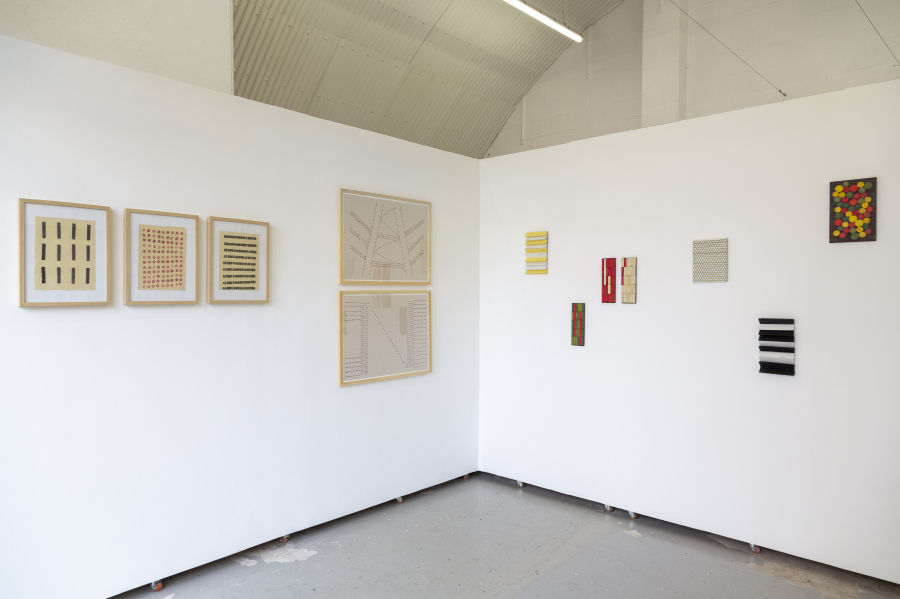
Sheroanawe Hakihiiwe & Luis Romero:venezuelan Pavilion
This year, the Venezuelan Pavilion failed to open its doors to the public during the preview days of Venice Biennale amongst the political turmoil that has taken over the country since the beginning of 2019. Unintentionally, the closed pavilion became a powerful metaphor for the devastating effect of twenty years of disastrous cultural policies in the country -not to mention numerous other government policies that have led to the current humanitarian crisis. As a response to this episode, Kupfer invited Venezuelan artists Luis Romero and Sheroanawe Hakihiiwe to stage their own guerrilla pavilion in East London.
Sheroanawe Hakihiiwe (Sheroana, Amazonas, 1971) is an indigenous artist who lives in the remote Yanomami community of Pori Pori, located at the shores of the Orinoco River, in the Venezuelan Amazon. The artist started his training in the creative field in 1992, when he learned to make artisanal paper with native fibers under the guidance of Mexican artist Laura Anderson Barbata. Together they founded the community project Yanomami Owëmamotima (The Yanomami art of producing paper), a pioneering and self-sustainable initiative that published the first handmade books produced collectively by the Yanomami community. In his paintings, drawings and prints, Sheroanawe often uses vegetable ink to masterfully explore the formal potential of the medium at the same time as recording the complex sacred and mythical knowledge of his ethnic group.
Amongst the works shown at Kupfer are two drawings from the Huwe Moshi, Hakihiiwe series (2017-2018), based on the skin pattern of venomous coral snakes. In Yanomami mythology, characters often transform from animal to human and vice-versa. While on a purely a formal level these works establish a dialogue with Venezuela’s constructive legacy, conceptually they are firmly grounded on the Yanomami cosmogony. Recent exhibitions include Conjuro de ríos (Museo de la Universidad Nacional de Colombia, Bogotá, 2018) and the Shanghai Biennial (2018). Sheroanawe was the winner of the Illy SustainArt Prize at Arco Madrid (2019).
Luis Romero (Caracas, Venezuela, 1967) is a visual artist, curator and editor who lives and works in Caracas. He has exhibited his work in his native Venezuela and internationally, including solo and group exhibitions in the United States, Latin America and Europe. As co-director of the commercial gallery Abra Caracas, he has been supporting the work of several Venezuelan artists –including Sheroanawe– since 2016, having previously directed Oficina #1 (2006-2016).
In his works, Luis Romero articulates art historical references, everyday objects, language and the void with a remarkable economy of means. The selection of works presented at Kupfer focuses on the dialogue with the legacy of geometric abstraction in Latin America. In contrast with the rationalist approach adopted by most historical artists from the region, Romero makes works which, in spite of their apparent objectivity and formal rigor, are imbued with the narrative contents evoked by the materials he employs.
In his series of embroideries on canvas, geometric precision is compromised by the use of fabric; a similar effect is achieved in the series of reliefs built with modules of hand-carved dyed bones. Evoking ideas related to the handmade, the feminine, and death these works invest the rationalist principles expressed by geometric abstraction with a sense of vulnerability and collapse.
SHEROANAWE HAKIHIIWE & LUIS ROMERO: VENEZUELAN PAVILION
Kupfer, Arch 213, 27A Ponsford Street, London
26 May – 8 June, 2019
También te puede interesar
AMAZONÍAS. UNA REVISIÓN SOBRE LA PLURALIDAD ARTÍSTICA DESDE Y EN TORNO A LA REGIÓN AMAZÓNICA
La región amazónica es uno de los territorios en los que se debaten temas cruciales para la vida contemporánea: desde la lucha por los derechos de comunidades indígenas y la preservación de sus saberes...
ESTÉTICA PROVISIONAL
Desde lo roto, lo descuidado, lo recolectado, lo informal, lo inestable, lo desechable, lo reutilizado, lo marañado, lo inacabado, lo usado, lo abusado, lo desdeñado, lo destruido, lo torcido, lo enredado, lo rasgado, lo...
MIRAR EN PRESENTE. ARTISTAS DE ABRA EXPONEN EN BOGOTÁ
Desde el pasado 29 de septiembre, la galería ABRA (Caracas) expone en los espacios de Sketch Galería, en Bogotá, el trabajo de los artistas venezolanos Pedro Terán (Barcelona, 1943), Luis Romero (Caracas, 1967), Hecdwin...







